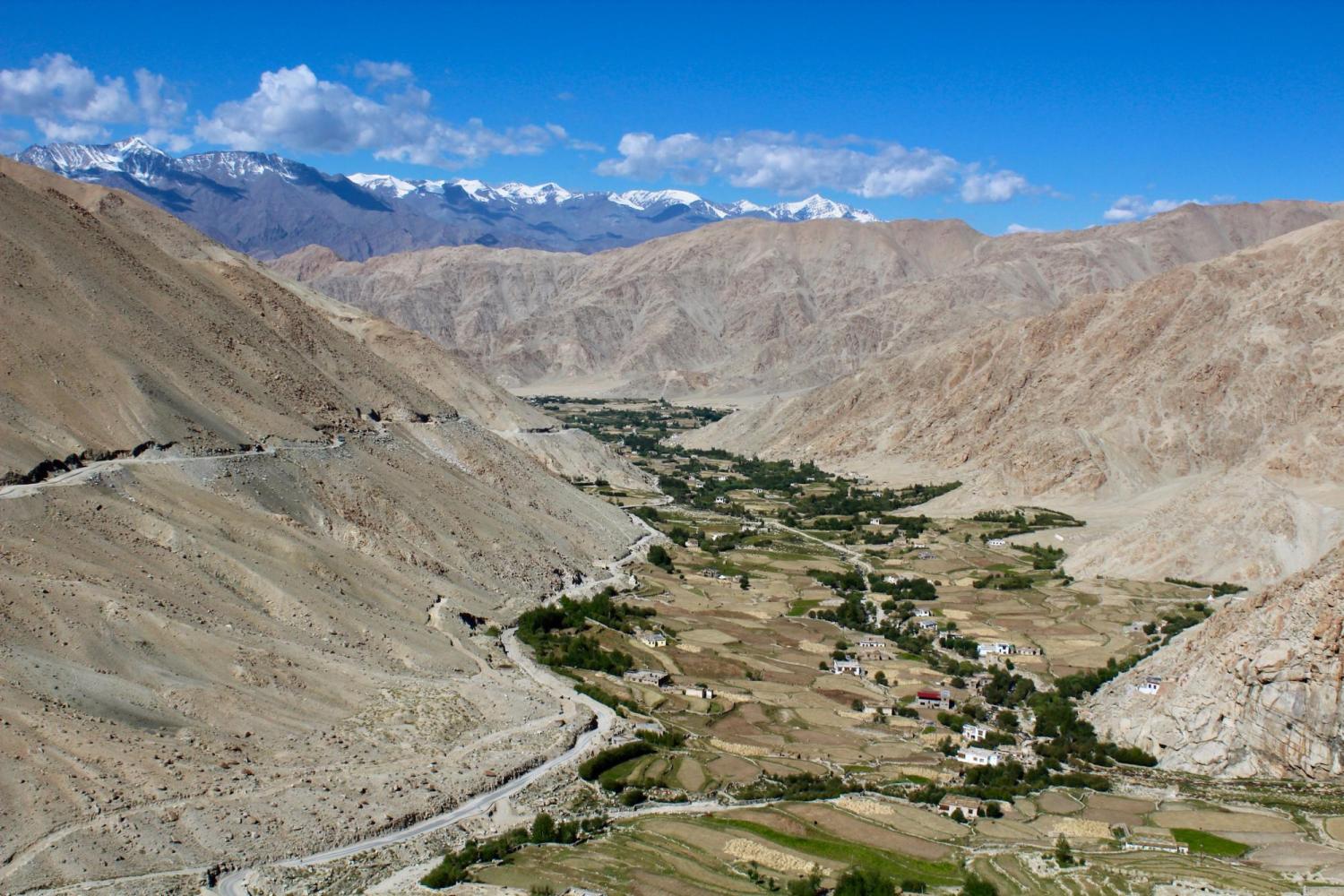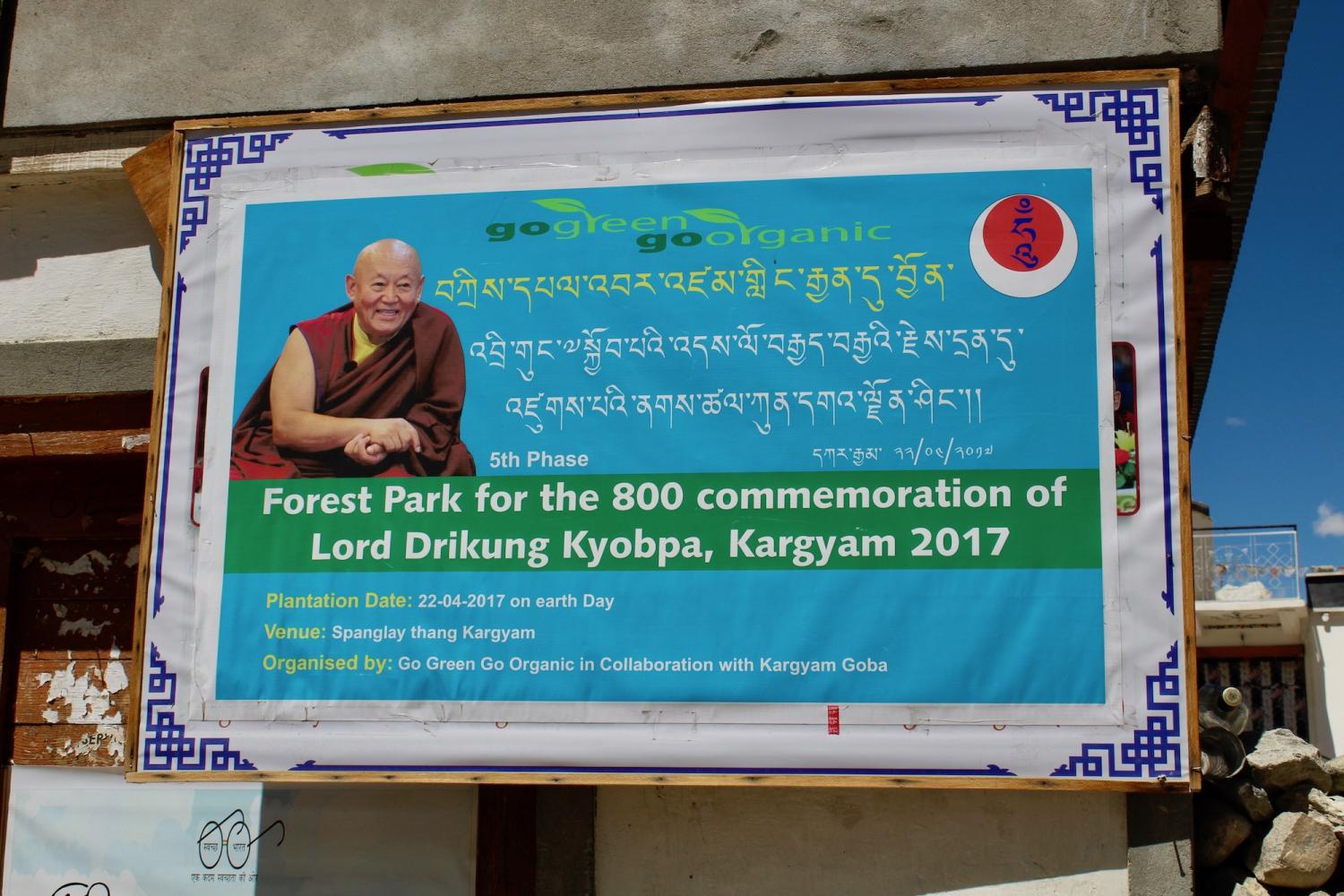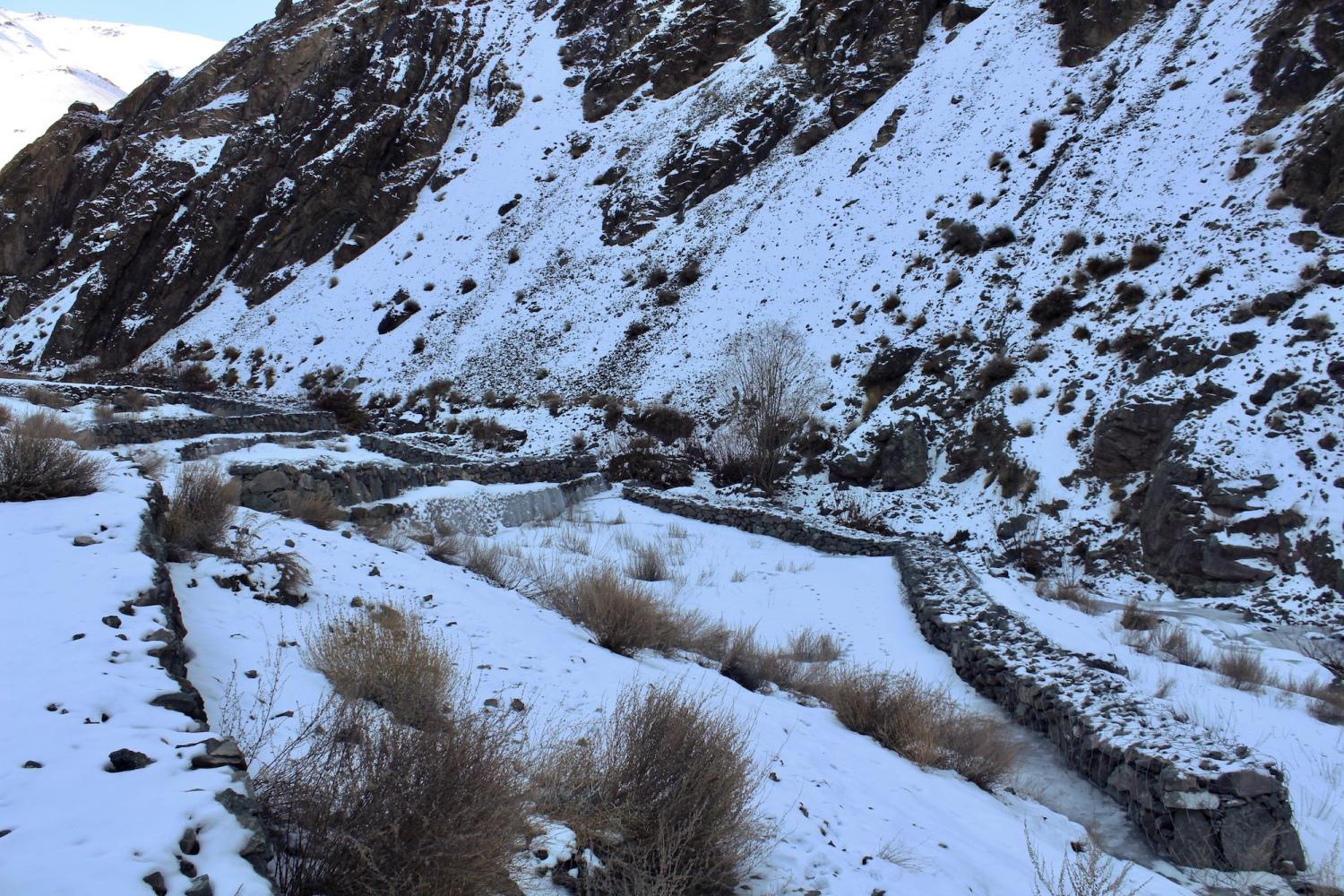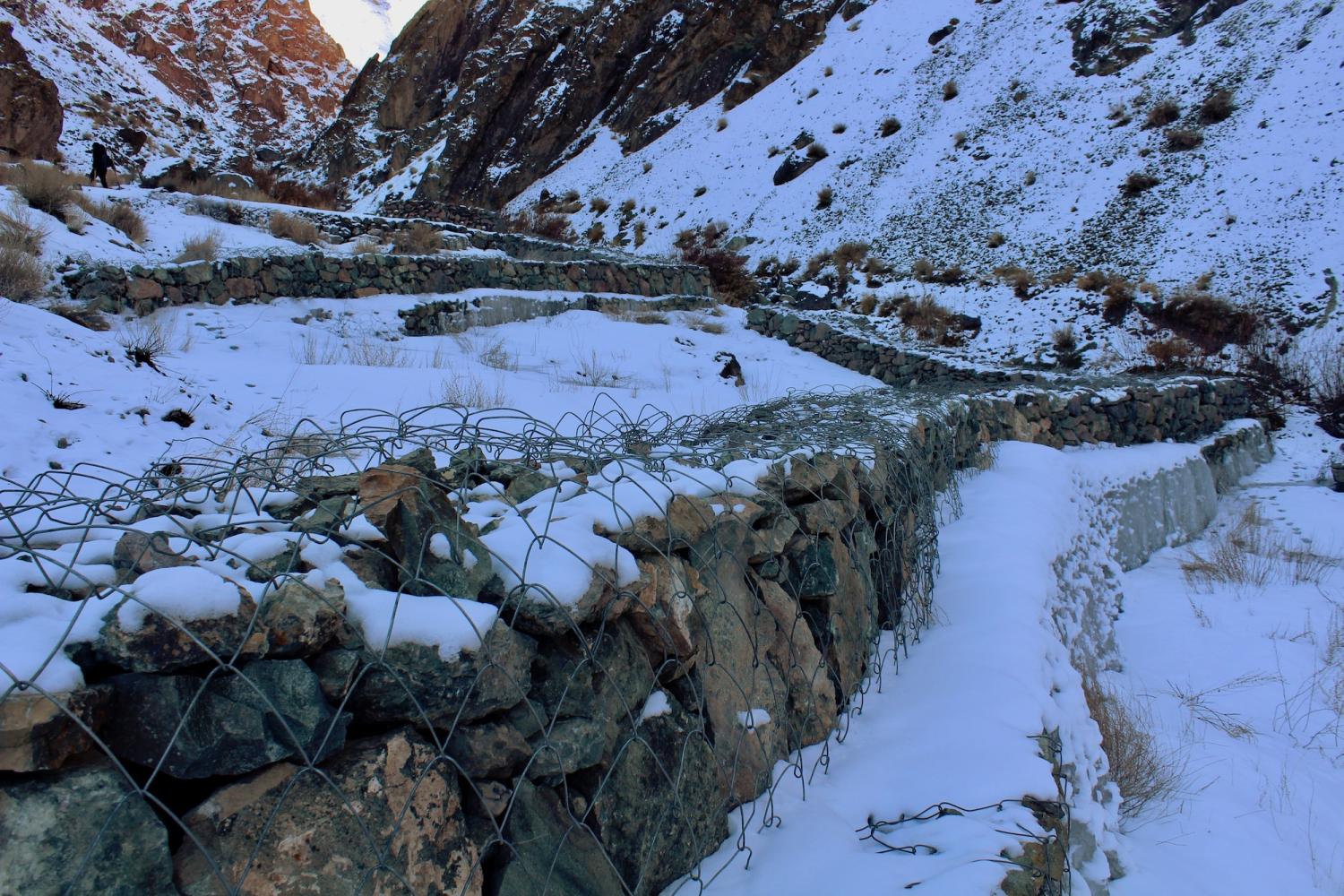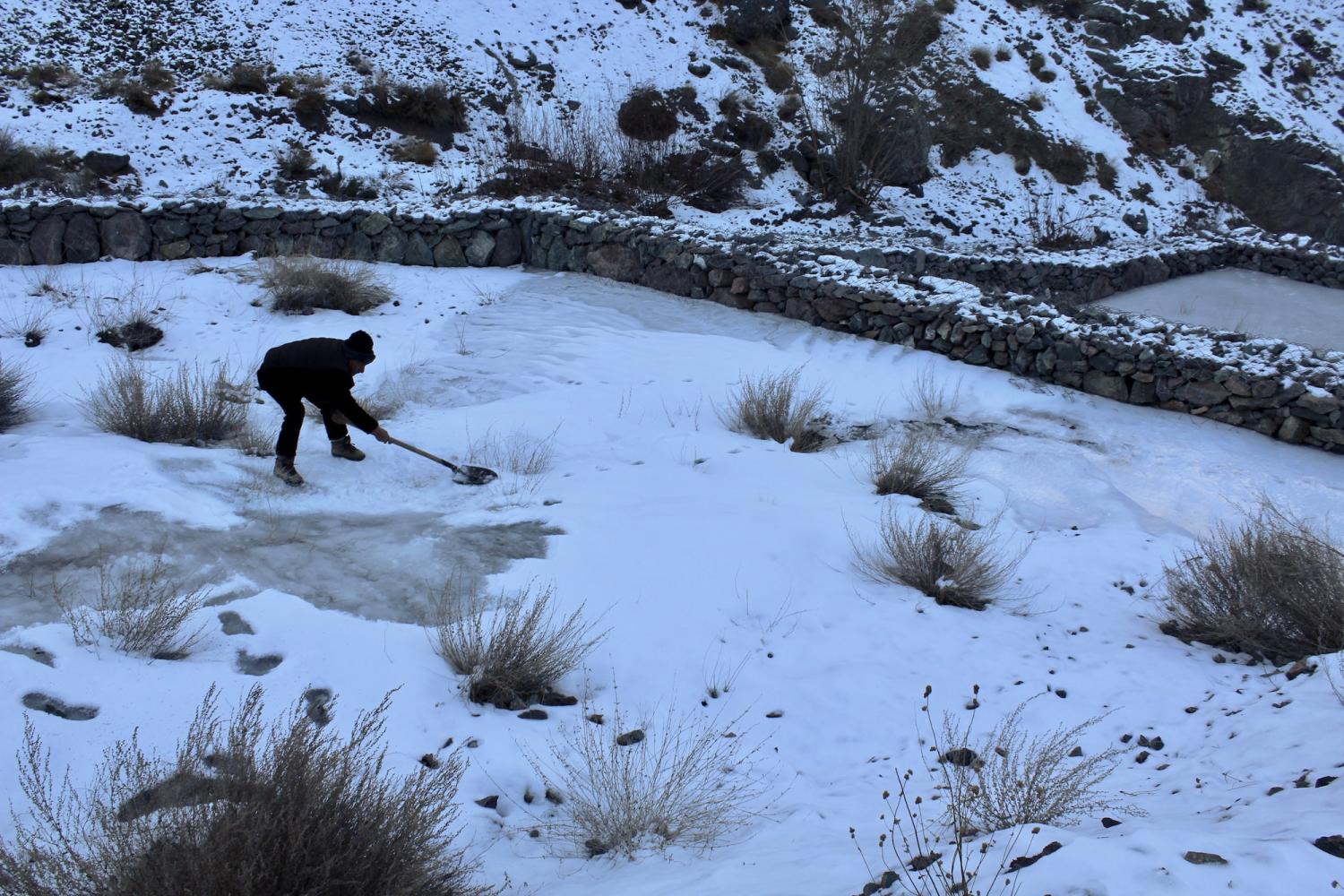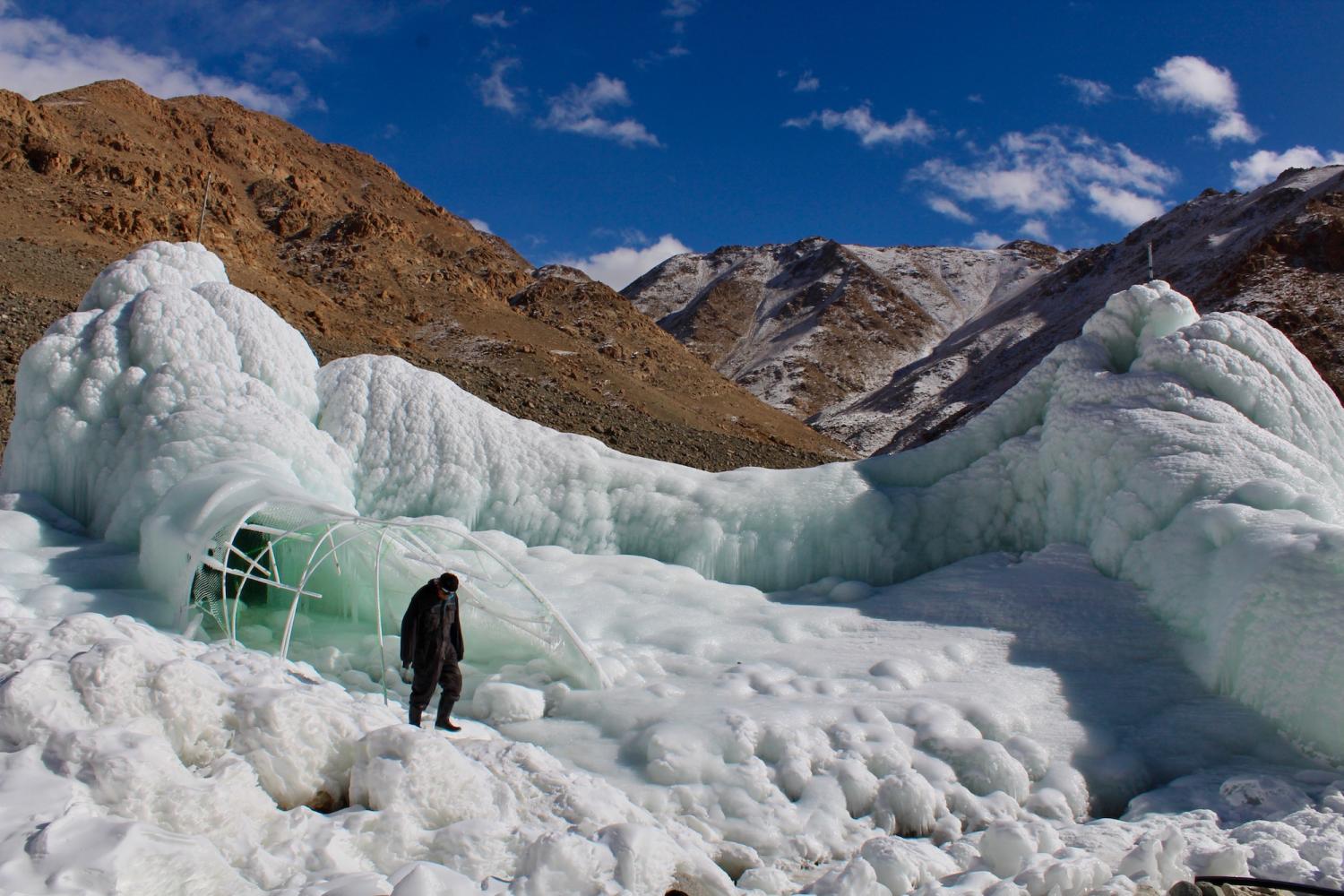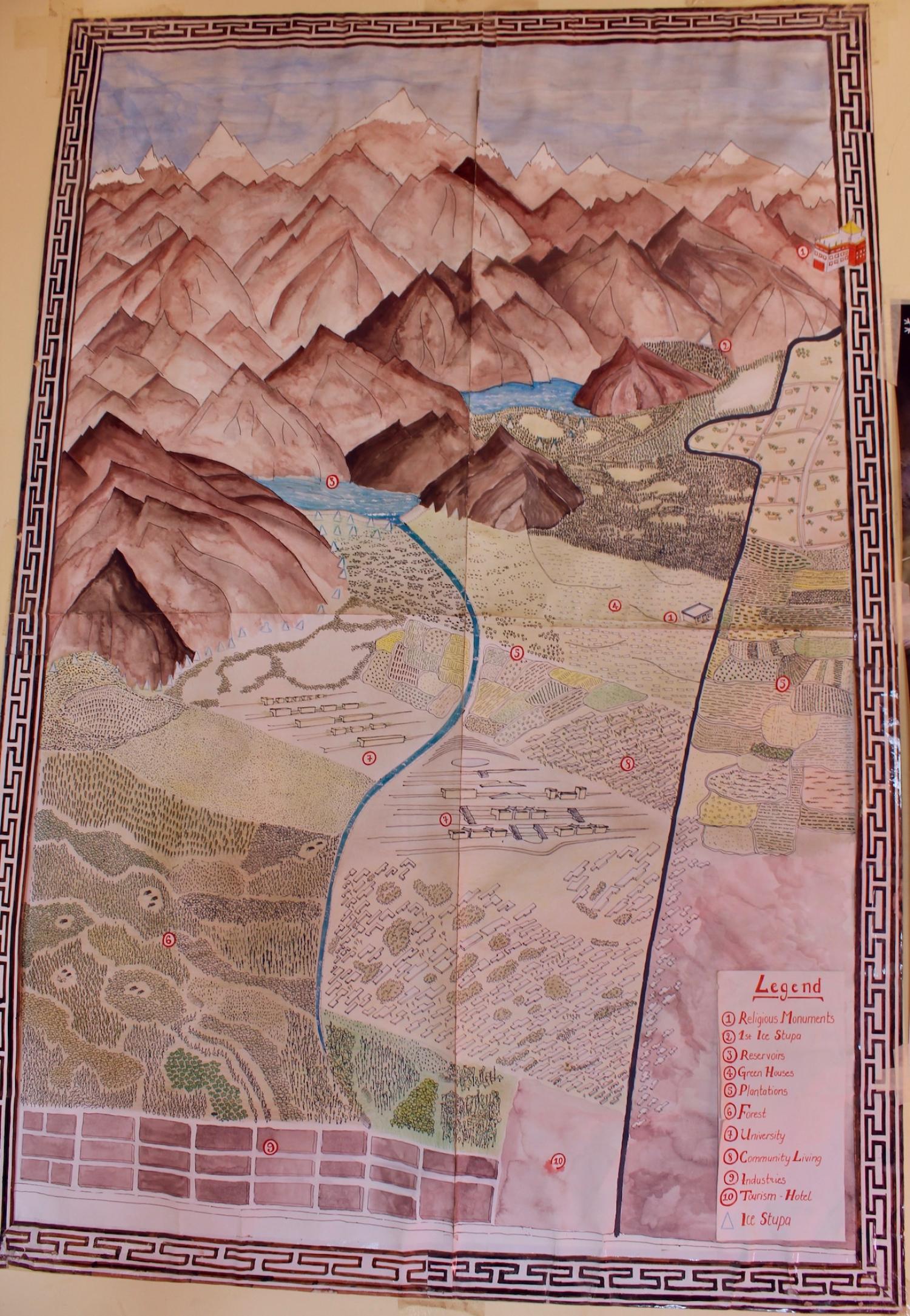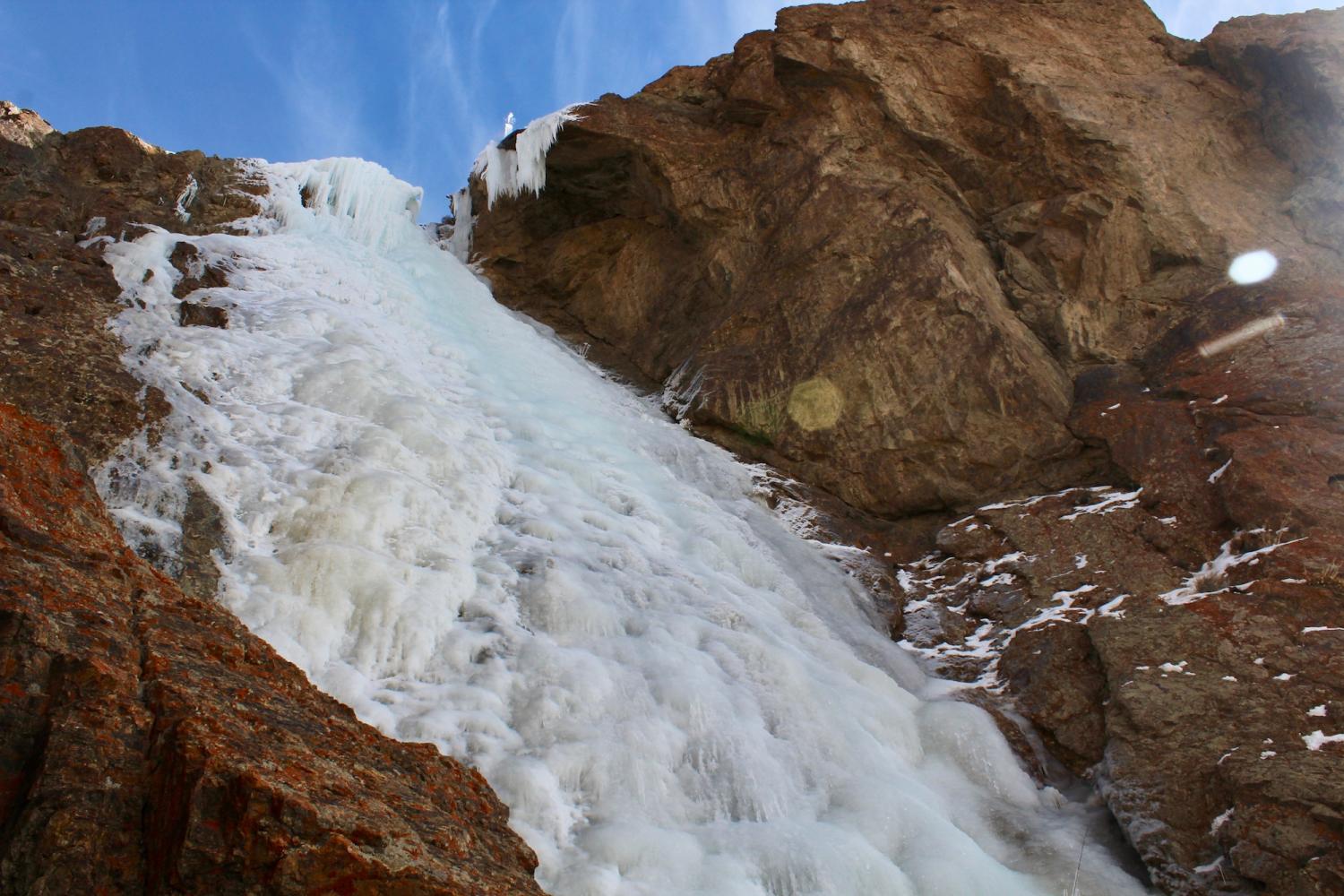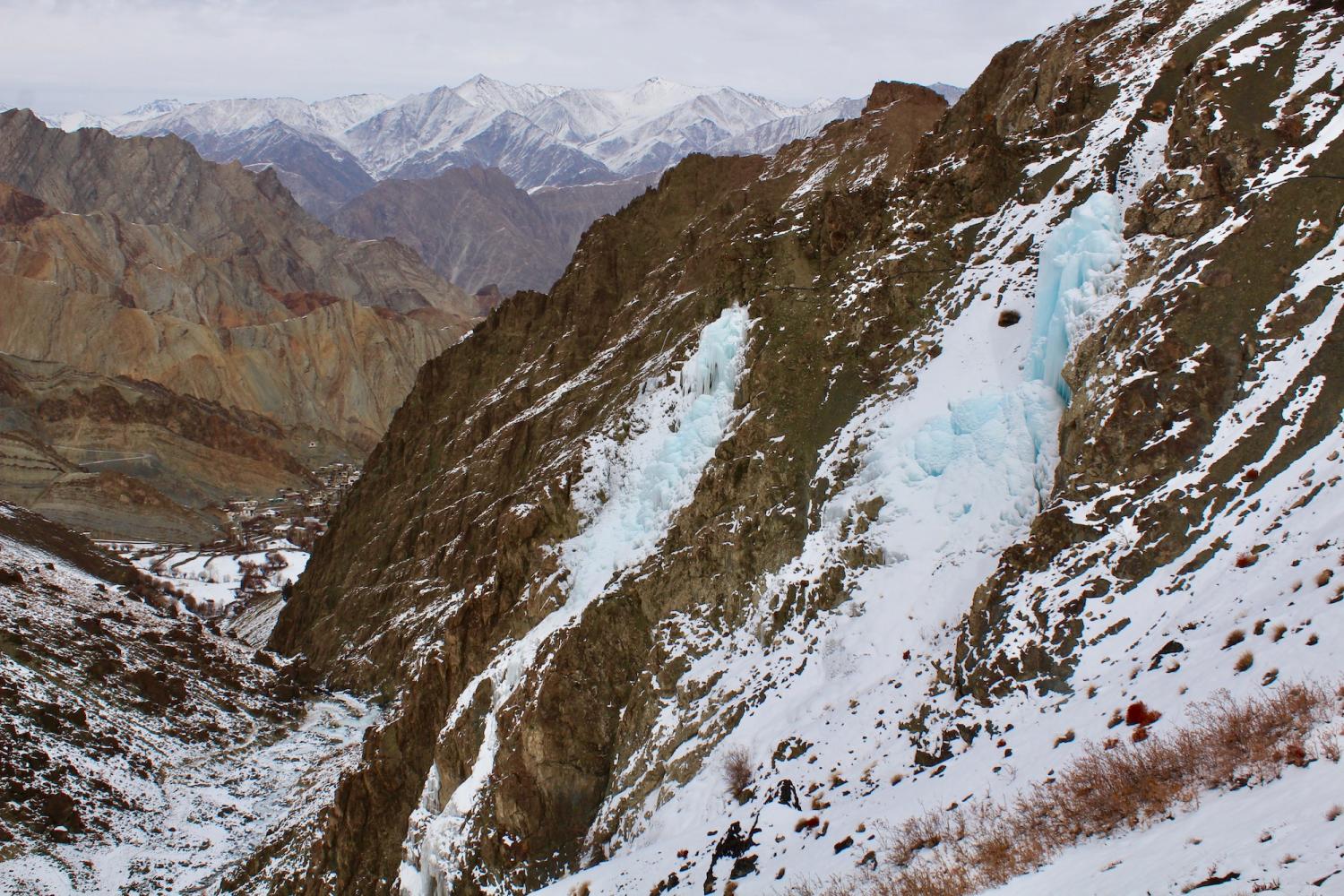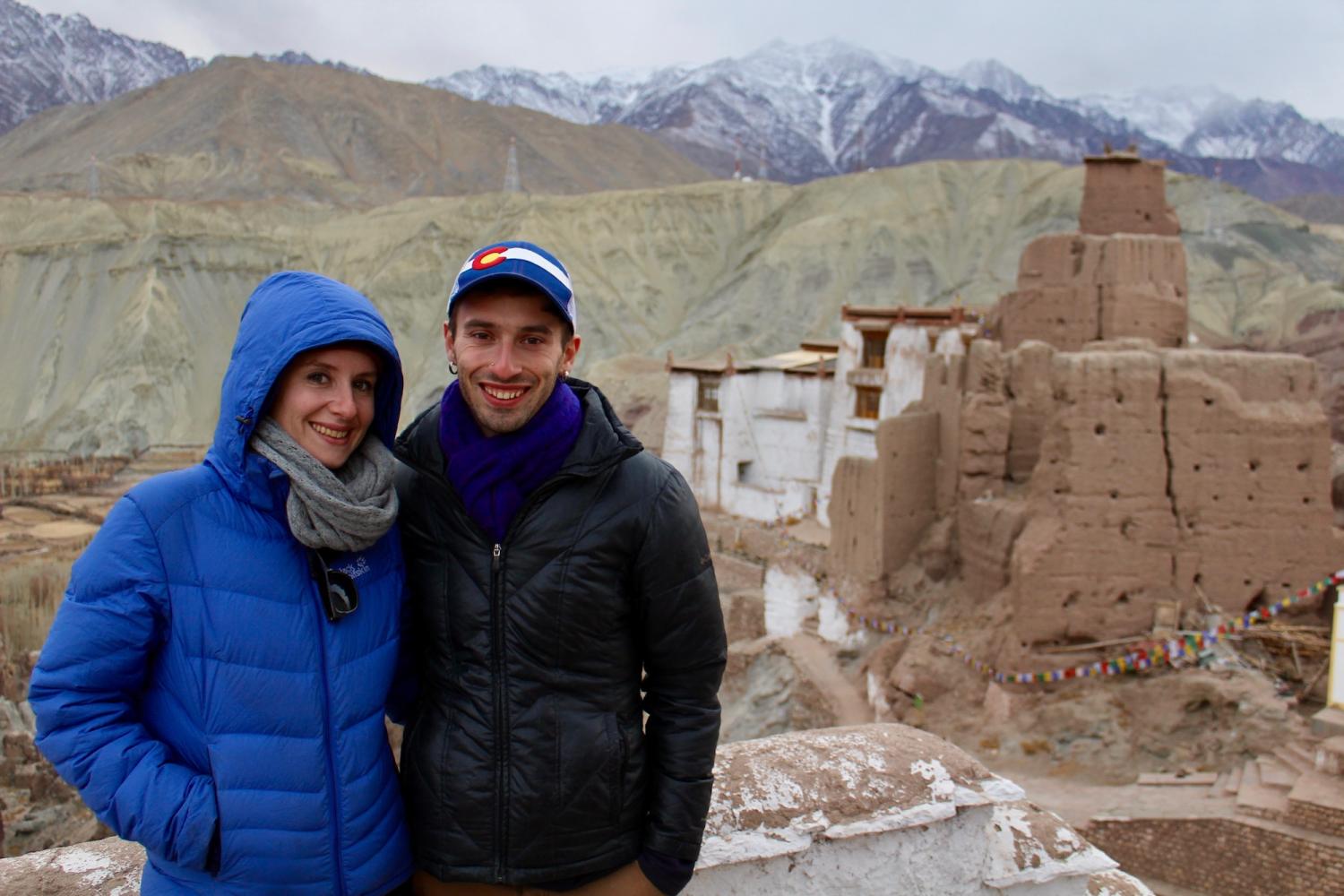A photo essay by Sierra Gladfelter and Eben Yonnetti
A land of glaciated peaks and windswept valleys situated in the Himalayas’ vast rain shadow, Ladakh has long been home to a hearty people who devised complex systems of irrigation and agriculture to survive and even thrive in this high-desert landscape. Located on the western edge of the Tibetan Plateau, this region of only several hundred thousand people was once a crossroads of cultures and regional trade hub. After it was absorbed into the Republic of India in 1947 and its borders with Pakistan and Tibet were closed, however, Ladakh became little more than a strategic defense area for the rest of India. Its place on the periphery only changed after Ladakh was opened to tourism in 1974 and later idolized in the 2009 Bollywood blockbuster Three Idiots. Now, with hundreds of thousands of tourists each year, unprecedented rates of rural to urban migration, and the Indian military continuing to expand its border presence, Ladakh has struggled to deal with the growing demands placed upon its natural resources.
In addition to social and political changes, climate change has transformed Ladakh into a landscape in environmental crisis. In just the last six decades, the Indian state of Jammu and Kashmir of which Ladakh is a large part, has lost 20% of its permanent ice reserves (Clouse et al., 2017). Considering that 85 to 90% of Ladakhi villages depend completely on glacier and snow-fed catchments for their water and that annual average rainfall is less than two inches (Norphel & Tashi, 2014), rising temperatures and dwindling snowfall do not bode well for the region’s future water needs. Moreover, what precipitation does occur is increasingly received in the destructive form of short and intense cloudbursts that the landscape cannot absorb (Dorjai & Mordelet, 2012).
In response to these intense environmental and social changes various non-governmental organizations (NGOs), government agencies, and even religious groups are mobilizing local peoples to build a more climate resilient Ladakh. Rather than mitigating scarcity through efforts to reduce use, however, many interventions attempt to capture Ladakh’s shrinking water resources before they are ‘lost’ downstream through the construction of various water harvesting technologies like ‘artificial glaciers.’ These structures are essentially human-made ice banks designed to collect and store water in the winter for spring and summer agriculture, and in some cases, are even used to irrigate and ‘green’ the desert.
Although ice reservoirs were built traditionally using various techniques in the Ladakh-Baltistan region, their contemporary form as ‘artificial glaciers’(AGs) was pioneered by civil engineer Chewang Norphel in the late 1980s. Norphel’s AGs are built as a series of terraced ice fields in or along a stream channel. One method involves diverting a portion of a stream to a shaded bank where it is forced through a series of check dams that slow its flow and increase surface area to expedite freezing. In another, the dams are built directly in the streambed to achieve similar results. First built by Ladakh’s Rural Development Department and the Leh Nutrition Project in a handful of water scarce villages, AGs are now receiving interest and investment especially among corporate donors. In 2017, for example, the Tata Trusts (which have already built five AGs around Leh) began assessing the feasibility of constructing AGs in 34 potential villages.
Inspired by Norphel’s work, Ladakhi engineer and social reformer Sonam Wangchuk invented another type of ice reservoir he dubbed the “Ice Stupa.” The name comes from its conical shape, which resembles a traditional Buddhist stupa or reliquary mound, and allegedly can be built at lower elevations since it melts slower than terraced AGs due to its shape and smaller surface area. After constructing a prototype in the winter of 2013/2014, Wangchuk’s work was recognized by the Tibetan Buddhist leader, His Holiness Drikung Chetsang Rinpoche, who offered funds, labor, and land near Phyang Monastery to support a scaled-up version. The next year, Wangchuk and his team constructed a larger Ice Stupa near the village of Phyang to irrigate a plantation of 5,000 trees planted by Chetsang Rinpoche’s environmental organization, Go Green, Go Organic. In the years since, the Ice Stupa Project has continued to experiment with different materials and construction techniques to improve their technology so that it can become applicable and affordable for villages on a large scale.
Most recently, with direction from Chetsang Rinpoche, two monks from Lamayuru Monastery have also started to work with villages in Ladakh’s Sham Valley to experiment with low-tech ice reservoirs. Compared to Norphel’s AGs and Wangchuk’s Ice Stupa, these small-scale “artificial icefall glaciers” are less expensive and technical, involving little more than a pipe laid out between a spring and a shaded cliff face. The water conveyed is sprayed onto the rock wall below to form a frozen waterfall. First built in the village of Kuksho in the winter of 2016/2017, the project has since expanded into two nearby villages.
While much of the world is looking to Ladakh and its AGs for inspiration, it seems that a more critical look at these interventions is warranted. Maintenance, for example, has been a challenge since Norphel built his first AG. With little budget for follow-up visits or maintenance, most AGs are essentially abandoned after construction for local villagers to maintain. However, many of these structures are built far above villages and as external interventions have eroded collective-labor practices, repairs initiated by locals are rare. This might explain why more than half of Norphel’s earliest AGs have either gone completely or partially defunct (Clouse et al., 2017). The monks initiating the artificial icefall glaciers have been able to partially avoid these challenges by capitalizing on villagers’ devotion to Chetsang Rinpoche to recruit volunteers to monitor and maintain these structures. Nevertheless, the demands that religious leaders can make of their followers’ time and labor have a limit. Even devotion can only be stretched so far.
Most importantly, Ladakh’s ice reservoirs, in any form, are not a solution to climate change or scarcity in the long-term as they only preserve, for a few months, water that is already present in the mountains. No matter how high-tech AGs become, they can do little if Ladakh’s natural glaciers continue to disappear and the skies refuse to snow. Humility, however, is often lacking in interventions. The Ice Stupa Project, for example, invites visitors on its website to “join Ladakh as it gears up to fight climate change and melting glaciers.” The reality, however, is that AGs are not a weapon to combat climate change, but are rather a way for Ladakhis to cope with its most immediate effects and to try to hold on, at least for now, to life in this landscape.
This photo-essay captures the dreams and realities surrounding AGs in Ladakh. Informed by three months of preliminary research in Ladakh, it presents some visual evidence to accompany the authors’ reflections while on Fulbright-Nehru Student Research grants in India.
References
- Clouse, C., Anderson, N., & Shippling, T. (2017). Ladakh’s artificial glaciers: climate-adaptive design for water scarcity. Climate and Development, 9 (5): 428-438.
- Dorjai (Gya), S. & Mordelet, C. (Directors). (2012). Jungwa, the Broken Balance. France: Latosensu Productions.
- Norphel, C. & Tashi, P. (2014). Snow Water Harvesting in the Cold Desert in Ladakh: An Introduction to Artificial Glacier. In Mountain Hazards and Disaster Risk Reduction. Nibanupudi, H.K. & Shaw, R. (Eds.), pp. 199–210. Tokyo: Springer Japan.
Please note: While the content above was generated through research funded by the Fulbright Nehru Student Research Grant program, the views expressed are entirely those of its authors and do not represent the views of the Fulbright Program, the U.S. Department of State, or any of its partner organizations.

